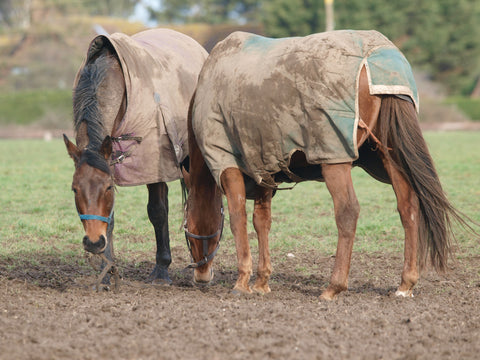Rugging your Horse

When it comes to that time of year when the temperature drops, horse owners are ready to dig out a thick rug from the tack room or give a horse an extra layer. But is this the best thing for your horse?
When we get cold we tend to put an extra layer on, and this often makes us feel like we should put an extra layer on our horses too. This isn't always the case - unlike humans, when we think it is cold outside, most horses still feel comfortable. This is because of their thermoneutral zone. Humans have a thermoneutral zone of between 25-30C, much narrower than the horse which is 0-25C.
In fact, over-rugging can be a bigger issue than your horse just getting a little too warm; in some instances it can result in colic and increasing chances of laminitis.
So, here is a handy chart to guide you when rugging your horse this Winter:

When deciding whether to rug your horse it is important to remember that every horse is different. Young stock and old horses or ponies may cope less well in the cold.
When trying to judge how warm your horse is, feeling your horses' ears, face or legs is not a true indicator of their body temperature. Ideally place your hand inside the rug behind the withers, if it is damp, its likely they are too warm, if it feels cold, you may need to consider a thicker rug.
Horses evolved to grow coats to protect them from the weather, but some domesticated animals will need further protection by wearing rugs. It is important to note that a rug will flatten the natural coat (if they haven't been clipped) resulting in less air being trapped near the skin and reducing the horse's natural ability to stay warm. In such cases horses may need continual rugging in wet and cold conditions.
Most horses will not need rugging until the temperature drops below 5- 10C unless they have been clipped or are susceptible to condition loss.
